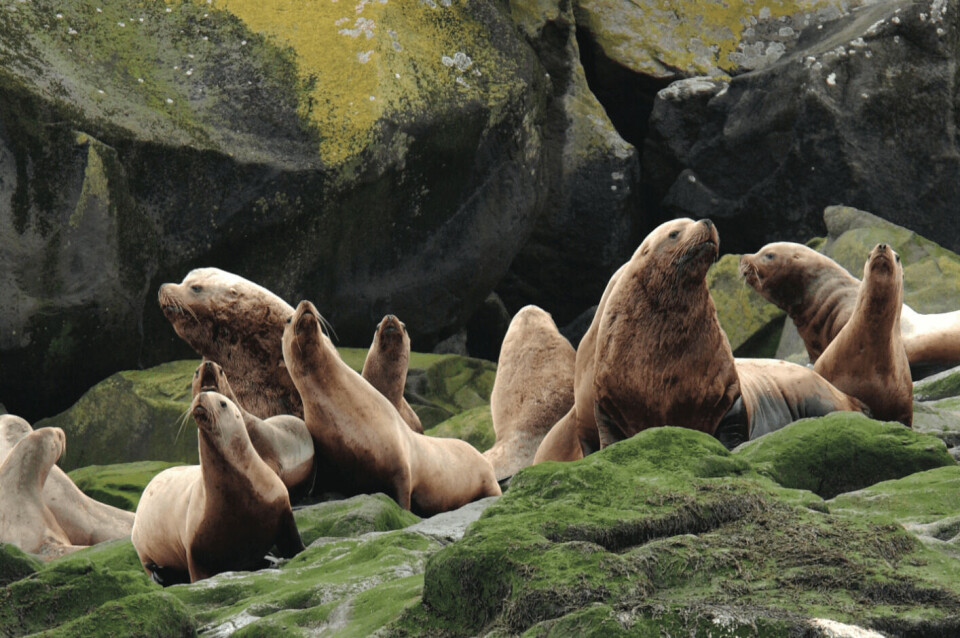
What is the real threat?
The death of a humpback whale associated with salmon farming lines has the public wondering: does aquaculture pose a serious threat to marine mammals?
In an unfortunate chain of events, employees of Marine Harvest Canada found a dead humpback whale entangled in empty aquaculture lines November 15th.
The dead whale was discovered as staff from Marine Harvest Canada were in the process of dismantling the farm’s anchoring system after a previous whale entanglement, said a company statement. In September, a 3-yr old whale was found trapped in the anchor lines and was eventually released.
“Prior to September’s incident, no such encounter had occurred in the company’s 30 years of operation,” said a statement from Marine Harvest, adding the entire site near Sheep Passage has since been dismantled by Marine Harvest employees.
Marine Harvest is “currently surveying all aquaculture sites with similar anchoring designs and engineers are making the required changes to eliminate the risk of reoccurrence,” said the statement.
"It's very upsetting for all of us," said Ian Roberts, communication manager for Marine Harvest Canada. "This was very unfortunate and disappointing and sad for all of us involved."
He said the previous whale was safely released, and the company intends to remove all the support lines at fish farms in that area.
Roberts informed Fish Farming Expert that the company has contracted a submersible ROV to cut away all anchor support lines immediately to ensure no reoccurrence. He explained that the anchor support lines served a temporal purpose and are not an integral part of the anchoring integrity. He also noted that neither incident was associated with the actual anchor lines.
Prior to the September incident, Roberts said nothing like this had ever occurred in the company's 30 years of operation.
In BC, interactions with marine mammals have consisted solely of Harbour Seals, California Sea Lions and Steller Sea Lions.
A report from the Department of Fisheries and Oceans (DFO) in 2016 stated that “marine mammal mortalities have remained low on BC salmon farms, despite growth in seal and sea lion populations, indicating that methods and infrastructure in place to reduce interactions are extremely effective”.
However, aside from the tragedy last week, the available data indicates that, other marine-based activities present a much greater threat, including ship strikes and commercial fishing.
Ship strikes pose a ‘significant threat’
For example, a report by Jensen and Silber in 2003 concluded that injuries and deaths resulting from ship collisions with whales are a significant threat to many whale populations.
Based on information obtained from NOAA Fisheries for 1975 to 2002, records of ship strikes were drawn from ship reports, marine mammal stranding reports, and NOAA Office of Law Enforcement reports.
Over the 27 years of available data, there was 292 reported whale strikes with Finback whales the most often reported species hit (75 records of strike), followed by humpback (44 records), and North Atlantic right (38 records) whales. Of the 292 reported strikes, 48 (16.4%) resulted in injury to the animal and 198 (68.0%) were fatal.
The same authors noted that the occurrence of ship strikes is likely severely under-reported as with larger vessels, the crew often does not detect a strike.
Bycatch a ‘leading contributor to decline’
According to a 2014 report produced by the Natural Resources Defense Council (NRDC), commercial fisheries around the world are estimated to kill or seriously injure more
than 650,000 marine mammals every year, with bycatch the leading contributor to the decline of many marine mammal populations.
In Canada, large whales, predominantly humpbacks and minkes, are caught in ropes from a variety of inshore and offshore fishing gear in Canadian waters, including traps and gillnets targeting groundfish such as Atlantic cod and lumpfish, as well as offshore pot gear targeting crab and lobster.
For example, of the 1,209 large-whale entanglements recorded in Newfoundland and Labrador from 1979 to 1998 - 80 percent consisting of humpbacks and 15 percent of minke whales - approximately 60 percent involved pots targeting snow crab.
A more recent NOAA report published in 2013 by Allen & Angliss indicated that, with respect to humpback whales in the Northern Pacific Ocean, the estimated annual mortality rate related to commercial fisheries in the US was determined to be 0.62 whales per year.
However, the report noted that this estimate was considered a minimum because there are no data concerning fishery-related mortalities in Japanese, Russian, or international waters.






















































